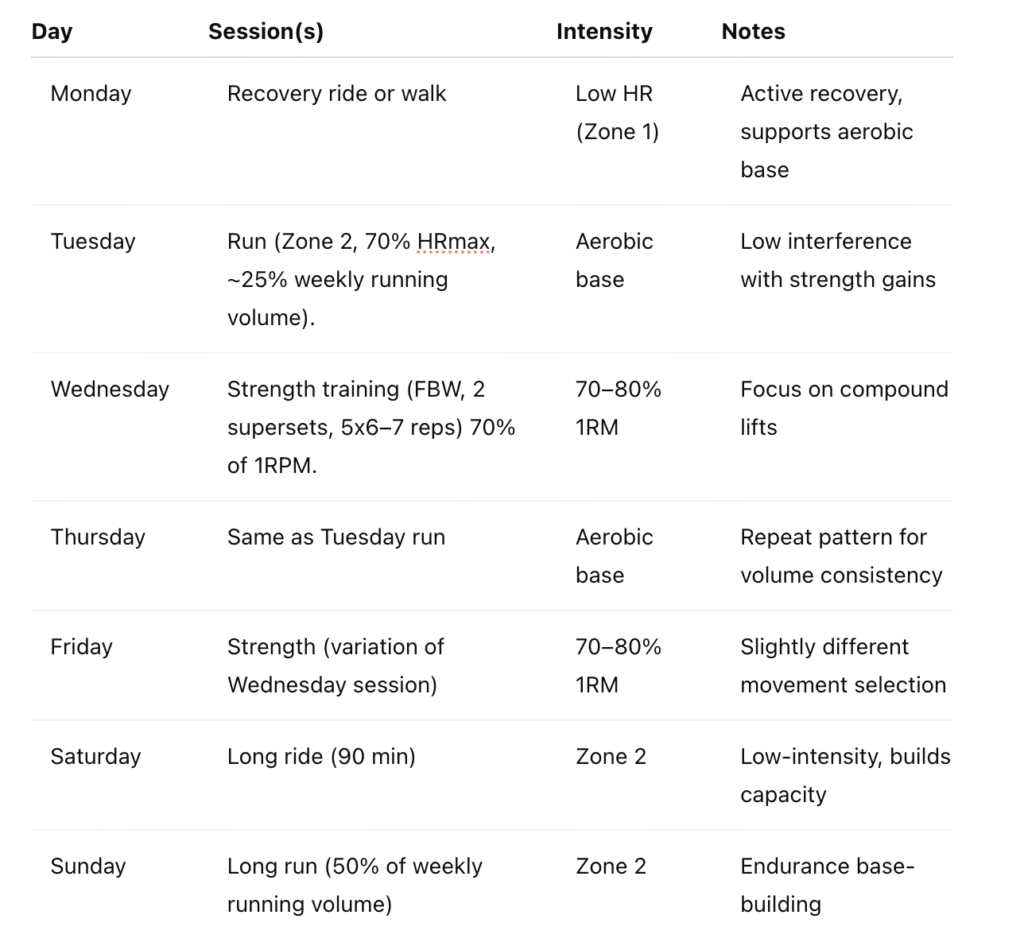
How to Combine Strength and Endurance Without Interference Effect
In hybrid training, where strength and endurance coexist, a major challenge arises: the interference effect. This physiological tug-of-war can sabotage gains if not carefully managed. But with intentional design, it’s possible to make consistent progress in both domains. This module lays out a tested weekly training layout and the biological rationale behind it—so you can train smart and recover hard.
What Is the Interference Effect?
The interference effect refers to the physiological conflict that can occur when strength and endurance training are combined within the same timeframe. The issue lies in how different types of exercise stimulate competing adaptations through distinct cellular signaling pathways:
mTOR (mechanistic Target of Rapamycin): This is the primary pathway activated by resistance training. It promotes muscle protein synthesis, hypertrophy, and strength development. mTOR functions best in a low-inflammation, energy-available environment.
AMPK (AMP-activated Protein Kinase): Activated during endurance training, especially at higher volumes or intensities. It increases mitochondrial density, improves energy efficiency, and promotes fat oxidation. However, AMPK activation can inhibit mTOR if they occur too close in time.
The result? Too much concurrent endurance training, particularly high-intensity or high-volume sessions, can blunt strength and muscle gains.

Anti-Interference Design Principles
- Sequence Matters. When combining strength and endurance in a single day, always train strength first. This allows mTOR to initiate muscle protein synthesis before AMPK kicks in.
- Avoiding Volume Clusters. While Thursday through Sunday involves four endurance days, most are in Zone 2, minimizing systemic stress.
- Make Saturday a mobility day every third week (or 4 week if you use 3/4 periodization)
- Replace Sunday’s long run with a brisk hike periodically
- Strength Adaptation Optimization. Two sessions per week at 70–80% 1RM are sufficient for maintenance and progress in trained individuals.
- Fuel the Gains. Even with a body recomposition goal, avoid heavy caloric deficits on lifting days.
- Prioritize high-protein intake (2 g/kg body mass)
- Adequate carbs pre-lifting (especially for glycogen restoration)
- Recovery Monitoring. Use HRV, sleep quality, and subjective energy checks.
If multiple red flags arise:
- Replace a Zone 2 day with full rest or light mobility
- Adjust volume before intensity
Closing ThoughtHybrid training isn’t about doing everything at once. It’s about doing the right thing at the right time. With structure, logic, and listening to your body, you can progress on all fronts—without interference.
Pro Tip: Schedule strength training at least 6 hours apart from endurance work when both must occur on the same day. Better yet: alternate days entirely.



